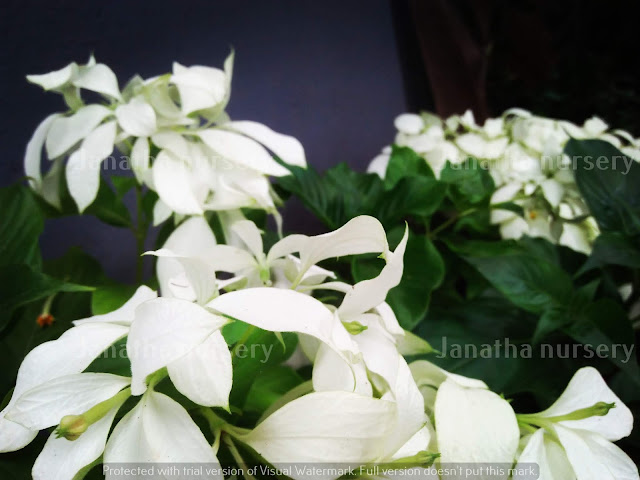
Mussaenda Bush
Mussaenda bushes are an evergreen tropical and subtropical shrub, which are the attractions of your garden from spring to fall, these are from the Rubiaceae family. It is quite popular and comes in colors like yellow, red or creamy white with red, white or pink. Read Growing condition of Mussaenda bush, Varieties of Mussaenda bush, Mussaenda bush careand more about this plant.
This is a great houseplant and you can put it in the container also. Its ‘Queen Sirikit’ variety produces pale yellow to white flowers with red centers and pink brats. It has a shrub of about 2 to 15 feet and 5 other different hybrid species which are used for farming.
Mussaenda flowers
Although these evergreen tropical shrubs grow up to 10-15 in their areas, in the St. Louis areas it is 1-3 ‘tall in the containers. Large, its leaf-like showy spell 3 inches long clusters of small, tubular flowers increase floral seals in the season. Some individual flowers in each cluster will develop a large sepal, which provides real decorative performance. It’s oval and bright green leaves are approximately 6 “long.
Growing condition of Mussaenda bush
Although it is easy to develop and care for these bushes, it is necessary to know its growing condition before planting.
Soil and location
It is grown in a completely fertile, dry and organic-rich, medium moisture soil. Winter hardy USDA zones 9-11 its grows well. They prefer full sun, so place it where there are less than 6 hours of sunshine. To get its shiny color, there is direct sunshine of morning and evening and shade in the hottest time. These bushes give you happiness in the hot months of the year and for a long time in the future.
Propagation
Propagation
Mussaenda propagation can be done with soft or semi-hardwood cutting. Another way of propagating is air layering and for this, the spring and rainy season are most suitable. Seeds are rarely used.
Fertilizing
Plants prefer organic-rich and fertile soil which is heavily fed, these plants are regularly fertilized. Due to the lack of nutrients, the plant can be damaged. Nutrients are easily separated from the soil in high rainfall areas. Using organic fertilizers is more beneficial. Benefit from regular organic, leafy fertilizer applications. Apply liquid fertilizer early in the morning or in the evening.
Watering
Make sure to keep the bush water once or twice per week, it keeps moisture in the soil which is necessary for the plant, but do not let the mud. Water the plants during dry periods, the plants suffer from dryness and can be absorbed and die.

















0 comments:
Post a Comment